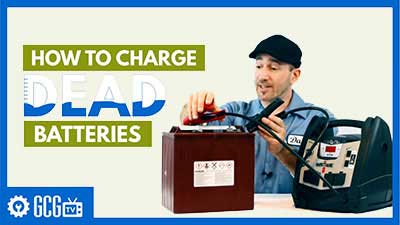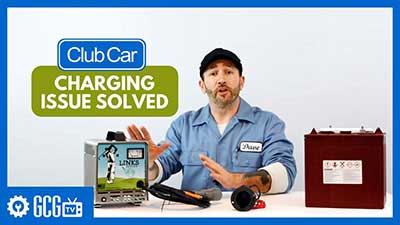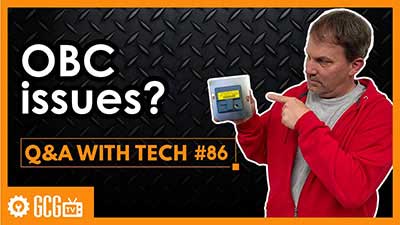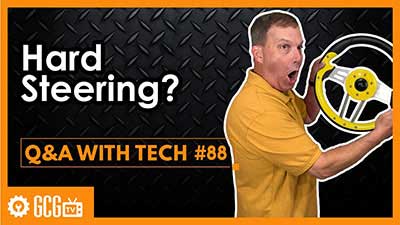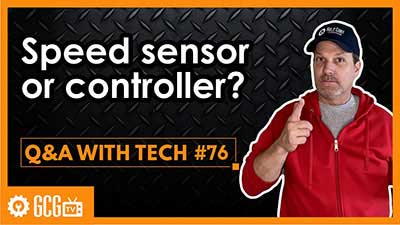Symptoms of a Bad Golf Cart Solenoid - Signs to Look for & How to Test
A solenoid is one of the main components in a golf cart that allows it to move. Whether electric or gas, you will find a solenoid in your golf cart. Every golf cart needs a proper solenoid to operate. Here, we’ll discuss the symptoms of abad solenoid on a golf cart.
First, let's get to know a bit about solenoids, the location, what it does, and more.
What is a Solenoid?
Simply put, a solenoid is a device that can transform electrical energy into mechanical energy. It's a coil of wire which is used as an electromagnet. The solenoid has the capability of creating a magnetic field with the help of an electric current. Solenoids work as the “go switch”, which is a must for any golf cart.
Where Exactly Are Solenoids Located?
Before knowing more about bad solenoids, you need to know their location. Usually, solenoids are located under the seat or just above the motor.
Symptoms of a Bad Solenoid on Golf Cart
Different signs indicate the presence of bad solenoids in electric or gas golf carts.
For a Gas Golf Cart
For a gas golf cart, the most common symptom is the starter failing to engage, so the engine doesn't turn over. Starters have the responsibility of activating the flywheel. When the flywheel starts to work, the starter is supposed to disconnect. If the starter remains active even after the engine has been turned on, that means the main contracts have come together and failed to release. This process indicates a damaged solenoid.
You may also find trouble in your spring being too worn down to get the pinion back to its original position properly. This indicates your starter is failing to disengage, and it is not working correctly.
For an Electric Golf Cart
If you drive an electric golf cart, you may deal with fewer symptoms of a bad solenoid on a golf cart. That doesn't mean that you won't ever run into any problems.
One of the most common and obvious signs of the bad solenoid is the golf cart's failure to start when you initiate the ignition process. Once you click the accelerator and turn on the ignition switch, it is supposed to send a signal to activate the solenoid and start the cart. If the cart does not start, there is a big possibility of a damaged solenoid.
Another reason for a bad solenoid is that the contacts are starting to get damaged due to overheating or high current passing through them.
Note: You may not necessarily experience all of these issues to recognize bad solenoids on your golf cart. Chances are you may encounter one or two. If you ignore any of these issues, it may cause damage to the starter.
How to Test a Bad Solenoid on a Golf Cart?
Testing bad solenoids in a golf cart is relatively simple, especially for Do-It-Yourself enthusiasts.
Step 1: Get the Right Tools
First, get a couple of tools, including a voltmeter, a wrench, gloves, electrical tape, and safety glasses.
Step 2: Disconnect the Solenoid Cables
Disconnect the cable attached with solenoid terminals from the starter or controller. Make sure to use electrical tape to seal the cable ends to avoid any circuit accident. Double-check that your golf cart is turned off and switched to neutral.
Step 3: Check Each Terminal
Take the voltmeter on the ohms setting and touch each large terminal with the probes with the key turned off. You need to get a zero reading. Try the same thing with the access on and the set to forward.
Step 4 (gas cart): Press the Accelerator and Listen for Clicking
Step on the gas and try to listen to the sound of clicking. If you hear the clicking sound, look for a reading of fewer than 0.4 ohms. If you get a higher reading, the solenoid is not working and needs to be replaced.
Step 5 (electric cart): Check the Voltmeter
For the electric golf cart, if the solenoid is silent, no clicking, use the setting voltmeter to DC volts using the 200 range. Turn on the ignition while noticing the reading on terminals. If it jumps and shows full voltage, then the solenoid is the problem.
Need More Advice on Golf Cart Troubleshooting?
This article covers almost everything to know about solenoids in golf carts and the symptoms you may notice. We hope that this article has helped you. Make sure to replace your solenoid as soon as possible to save your cart from any significant issues.
For more advice about golf cart maintenance or golf cart customization, get in touch with our experts at Golf Cart Garage.
Published March 21, 2021 by Golf Cart Garage
 Available 7 Days A Week!
Available 7 Days A Week! 





